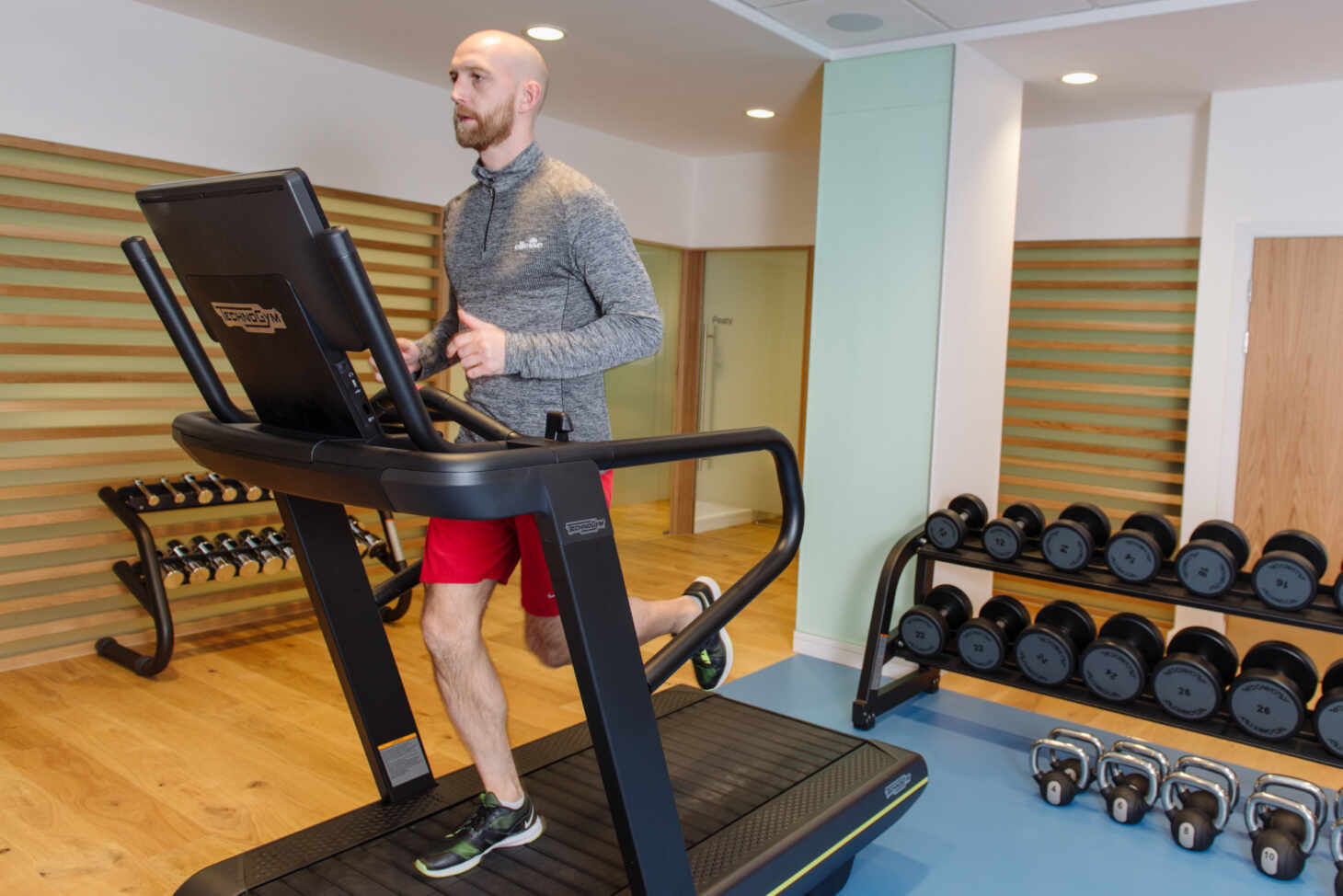Understanding the Interplay Between Diabetes and Exercise

Pure Sports Medicine
- 23 December, 2022
- Exercise
- Podiatry
- Diet & Nutrition
- 3 min read
Our multidisciplinary team of expert clinicians see people every day with diabetes and endocrinological conditions, and support them to live active lives and achieve their goals. But before we delve in to the practicalities of how people with, and without, diabetes manage exercising, we first need to understand what diabetes is.

What is insulin, and what does it do?
Insulin is a hormone, made in the pancreas, which is released after we consume carbohydrates through either food or drinks. Carbohydrates (or carbs) are the complex sugars and starches found in food that get broken down in the gut into the simple sugar, glucose.
Glucose is then absorbed into the blood stream, and it is the job of our insulin to move the glucose out of the blood and into one of three main areas: 1. the muscle cells, to provide energy (through specialised ‘insulin-dependent channels’), 2. the liver, to be stored (as glycogen a complex carbohydrate), or 3. to be converted into lipids and stored as fat.
Diabetes is a condition in which a person does not produce enough insulin, or it doesn’t work as effectively, or a combination of both, leading to higher than usual glucose levels in the blood.
Everyone with type 1 diabetes (in which there is insulin deficiency) and many people with type 2 diabetes (where there is resistance to the effects of insulin and reduced insulin production), take regular injections of insulin to help keep their blood glucose levels stable and in a target range. This keeps them feeling well in the short term and reduces the future risk of complications of diabetes, which arise with longstanding exposure to higher glucose levels. These can include circulatory problems such as heart attacks, and eye and kidney damage.
Why is exercise sometimes an issue for people with diabetes who use insulin?
When we exercise, our muscles need fuel to power them; initially most of this ‘metabolic fuel’ comes from glucose that is stored in the liver as it can be broken down quickly and released into the blood. Interestingly, insulin is not needed to move glucose into muscle cells when exercising – physical activity causes separate (exercise-dependent) channels to open in the muscle cells and allow glucose in.
When at rest, any excess glucose is stored, ready for when we exercise or move, and those without diabetes can rely on their pancreas to release just enough insulin to keep the liver from converting its stored glycogen into glucose, so that their blood glucose levels don’t go up – you could say the insulin acts a bit like a ‘brake’ on the liver’s delivery of glucose so we can use it when we need it.
When people who don’t have diabetes start doing aerobic exercise, like cardio for example, their insulin secretion falls, allowing the liver to release glucose for the exercising muscles. The glucose is absorbed into the muscle cells – through new channels that open in response to exercise and don’t need insulin – and off they go! Equipped with enough energy to move and complete their activity or workout. As the exercise continues, the liver keeps releasing glucose as needed, and the body’s fat that is also increasingly used as a fuel.
But what happens if people who use insulin for their diabetes want to do aerobic activity?
When people with diabetes who inject insulin start aerobic (cardio) exercise, the ‘brake’ on the liver stays on because they already have insulin in their system, which means less glygogen is broken down and less glucose is released from the liver to fuel the exercising muscles.
Additionally, whilst the ‘exercise-dependent’ glucose channels open up in the muscles, the insulin-dependent channels are also still working, driving more and more glucose into the muscles (which act like a sump). So there is less glucose being released into the blood, and more being absorbed into the muscles. The combination of these two processes puts people at increased risk of hypoglycaemia (‘hypo’) during and after cardio exercise. ‘Hypo’ refers to low blood glucose level (below 4.0 mmol/L) and can make people feel really unwell with symptoms such as feeling shaky, sweaty, hungry, and confused.
Fear of hypoglycaemia is a common reason lots of people with diabetes choose not to exercise regularly.
Luckily, there is a lot we can do to support people with diabetes when they exercise; from recommending fuelling strategies, to discussing glucose-sensing technologies, and making adjustments to their usual insulin regimen to support the activity they’re interested in.
At Pure Sports Medicine we work with people with diabetes to optimise their blood glucose levels around physical activity, aiming to minimise exposure to hypoglycaemia and ensuring that they are able to perform at their very highest level. It can require a bit of planning and thought, but we have supported hundreds of people with diabetes to attain their exercise goals and lead healthier, more active lives.

Advice
Over the last 20+ years our experts have helped more than 100,000 patients, but we don’t stop there. We also like to share our knowledge and insight to help people lead healthier lives, and here you will find our extensive library of advice on a variety of topics to help you do the same.
OUR ADVICE HUBS See all Advice Hubs

